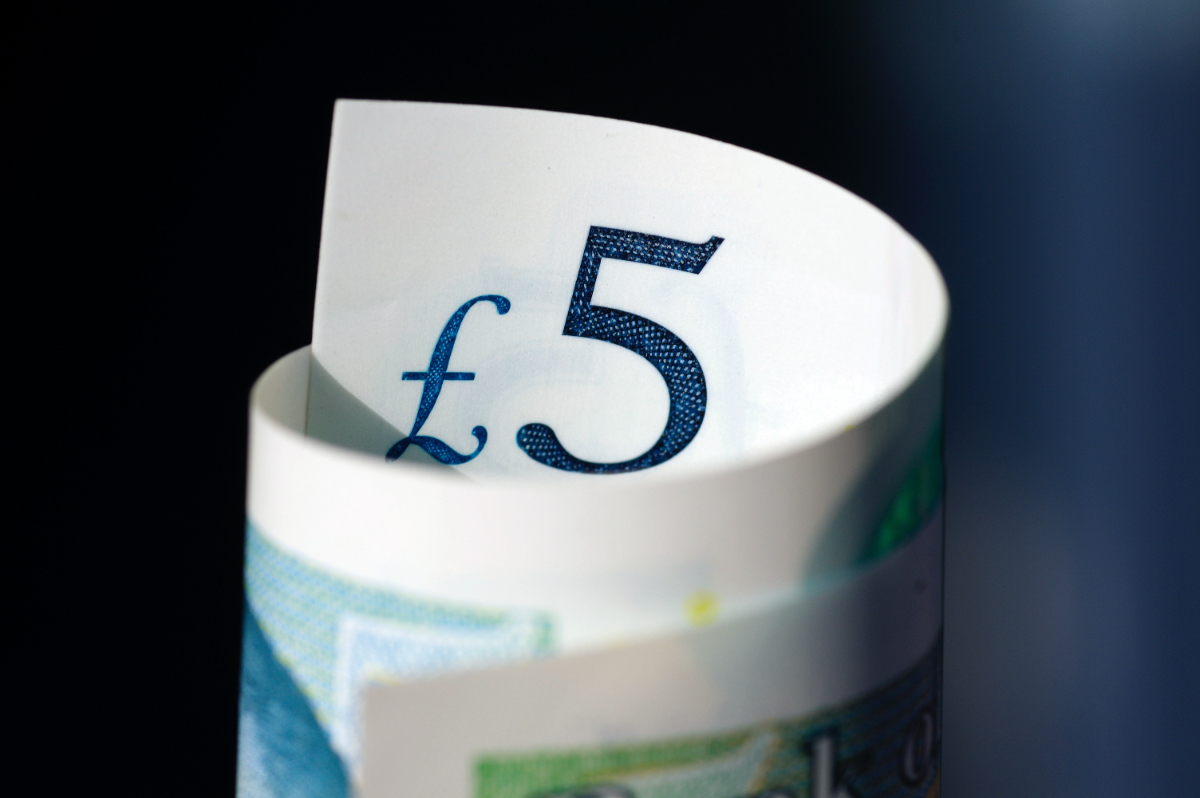How do you calculate payroll? We look at how to calculate take-home pay, salary before tax and taxes in the UK. Find out all you need to know about UK payroll.
Take-Home Pay in the UK
Whether you've just started a new job or are wondering how much of a pay rise to ask for, calculating your take-home pay after tax gives you a better idea of what you'll have to work with every month. There are many online tax calculators you can use to figure this out, whether you want to know your monthly income or your gross salary.
Salary Before Tax
This is also known as your "Gross Income" and refers to all the money you earn before your taxes are deducted from it.
Salary After Tax
This is also known as your "Net Income" and refers to all the money you take home after deducting your tax contributions from your annual salary.
Taxes in the UK
Most salary or tax calculators give you a rough estimate of your take-home pay once the necessary deductions have been made from your gross income. These deductions include things like Income Tax and National Insurance contributions. Here we will take you through these contributions and how they affect your salary or monthly income.
Income Tax
Your income tax is calculated from marginal UK tax rates, meaning your income will fall into a specific threshold will a pre-determined percentage being taken from your overall income.
This means there is no flat tax rate for all of your income. In fact, for the 2022-23 tax year, you can earn up to £12,570 tax-free, known as the "Personal Allowance". For those with salaries between £12,570 and £50,270, there will be a 20% income tax contribution, and for those earning between £50,271 to £150,000, there is a 40% income tax contribution. Anyone earning above £150,000 per year will pay 45% in income tax.
Essentially, for every £2 you earn per year over £100,000, your tax-free Personal Allowance is reduced by £1. Ultimately, the more you earn, the more you must pay in income tax. These tax rates apply in England, Wales, and Northern Ireland but are different in Scotland. We will cover the different tax brackets in more detail later in this article.
Student Loan Repayments
Student loan repayments are another mandatory contribution in the UK.
However, they only apply to those earning above a specific threshold. Like your National Insurance, there are two types of student loan repayments.
Plan 1 repayments apply to those who started university before the 1st of September 2012, while Plan 2 applies to those whose courses started after this date in England and Wales.
The Northern Irish and Scottish student finance organisations have separate repayment requirements.

National Insurance (NI)
Alongside your income tax contributions, you will also have to pay National Insurance when you earn above a certain amount. This is mandatory for everyone, given that paying it guarantees you benefits from the state, such as Jobseeker's Allowance and contributions to your State Pension.
If you are in regular employment, you are usually required to make Class 1 National Insurance contributions, while self-employed workers or sole traders pay Class 2 contributions. However, just like your income tax, you will have to make specific contributions depending on how much you earn per year, with those paying higher National Insurance contributions earning above a certain threshold.
Calculating a payslip in the UK
The information in this section applies to the tax year from the 6th of April 2022 to the 5th of April 2023. Here we will go over the specific differences between tax brackets for UK residents, National Insurance Contributions (NICs) and Pension Contributions.
UK (England, Wales, Northern Ireland) PAYE Tax Bands
The Basic Rate PAYE tax band in the UK is 20% for income between £12,501 to £50,270 per year.
The Higher Rate PAYE tax band of 40% applies to income between £50,271 to £150,000 per year.
The Additional Rate PAYE tax band of 45% applies to income above £150,000 per year.
Scotland PAYE Tax Bands
The Starter Rate PAYE tax band in Scotland is 19% for income between £12,571 to £14,532 per year.
The Basic Rate PAYE tax band in Scotland is 20% for income between £14,533 to £25,688 per year.
The Intermediate Rate PAYE tax band in Scotland is 21% for income between £25,689 to £43,662 per year.
The Higher Rate PAYE tax band in Scotland is 41% for income between £43,663 to £150,000 per year.
The Additional Rate PAYE tax band in Scotland is 46% for income above £150,000 per year.
Employee's & Employer's National Insurance Contributions
The Primary Threshold for those earning up to £9,880 are exempt from National Insurance contributions.
Those with incomes between the Primary Threshold and the Upper Earnings Limit, i.e. those earning between £9,881 to £50,270, will pay a NIC at a rate of 13.75%.
Those with incomes above the Upper Earnings Limit of £50,270 will pay an additional 3.25% NIC on all income above this limit.
As an employer or limited company, you must pay a NIC of 15.05% on gross income above £9,100 per year.

Personal Allowance & Personal Allowance Reducer
Those earning £12,570 or less per year qualify for Personal Allowance and have the tax code 1257L. This means you do not have to pay any income tax.
Again, for every £2 you earn above the £100,000 per year threshold will reduce your tax-free Personal Allowance by £1.
You will also have the £12,570 Personal Allowance if your tax code is 1250L, but it may be different if you are in an emergency tax bracket or have tax owing to the UK government.
Pension Contributions (Employee, Employer and Government)
The lowest amount of gross earnings that requires a pension contribution is £6,240.
Between the lowest level of £6,240 and the upper level of £50,270, you must pay a pre-tax pension contribution of 4% as an employee and a 3% contribution as an employer.
Given that this is a pre-tax contribution, the UK Government is technically giving you a 1% contribution on top.
Those with qualifying earnings above the upper level of £50,270 cannot qualify for tax-efficient contributions.
Calculate the cost of hiring someone
Employers can also use salary calculators to determine how much bringing on a new employee will cost them based on the salary they intend to pay.
They will also tell you how much a new employee will cost regarding National Insurance and Pension contributions.
Income Tax Breakdown
Income tax is just one part of your tax contributions that will come out of your gross income.
The amount you have to pay depends on several factors, including whether you have any dependents or other possible deductions to reduce your tax contributions.
Managing Your Tax in the UK
Depending on the way in which you are employed, you will have to approach paying your taxes in different ways. We will go through two of the most common ways people pay their taxes in the UK.
PAYE Tax
The vast majority of employees in the UK pay their Income Tax contributions through the PAYE system. PAYE stands for Pay As You Earn and is the most efficient way to pay your contributions.
Through this system, all of your Income Tax, National Insurance, Student Loan, and Pension Contributions will be deducted from your salary by your employer before you receive your wage. If your tax is collected through the PAYE system, you don't need to file a self-assessment tax return unless you have a secondary income that brings in more than £100,000.
UK Self-Assessment Tax Returns
If you are self-employed or earn over £100,000 per year, you will need to file a self-assessment tax return. The deadline for this is usually in January each year. These tax returns can sometimes be rather complicated, meaning most self-employed people choose to hire professional accountants or qualified specialists to help them.
They can also help you with any major financial decisions besides your taxes. You must submit your self-assessment tax return to HMRC (Her Majesty's Revenue and Customs), which you can do online or with a paper copy.
Once HMRC has assessed the details of the information provided and approved your tax return, you will usually need to pay tax contributions in two instalments, one in January and the other in July.
As part of your tax return, you need to declare your income, benefits, allowances, pension contributions and any other deductions you can declare, such as charitable donations.
Paying Less Tax in the UK
Everyone complains about the tax they have to pay here in the UK. But there are ways you can reduce the contributions you have to make.
For example, Working Tax Credits can save those eligible over £2,000 per year in tax. Additionally, if you have a child, claiming your Child Tax Credit could save you even more.
If you have a child, the likelihood is that you can also structure your earnings to be eligible for the Married Couple's Allowance, potentially saving you a further £250.
Putting some savings away for retirement is one of the easiest ways to lower your tax contributions. You can even earn interest when you save money for your retirement whilst reducing your tax obligations.

Are you looking for a tax returns accountant in Wakefield and west Yorkshire? Follow the link below to contact our tax advisors.

